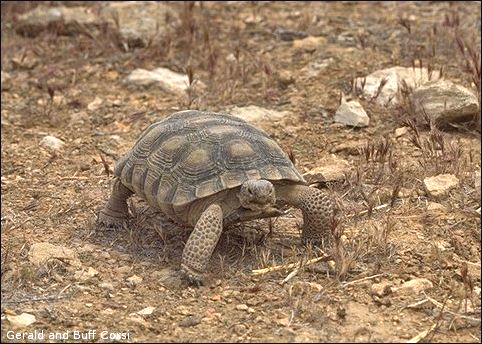
The case of the missing tortoise—was it murder? Desert Tortoises were widespread in the northern Chihuahuan Desert Region near the end of the last ice age, as documented by numerous remains. Why, then, are they now limited almost entirely to the Sonoran and Mojave deserts? To add to the mystery, true desert conditions didn't reach these northern regions until much later.
Two hypotheses add up to a choice between murder and natural catastrophe, sounding like a modern soap opera. Yet this was real life and death for these tortoises.
The murder hypothesis holds that early Native Americans entering the region found tortoises easy prey and quickly wiped them out.
The catastrophe idea draws on the vast environmental changes occurring at the time. Supporters note particularly that today these turtles are unable to withstand long, hard freezes, and the end of the ice age is thought to have ushered in more severe winters than in the preceding millennium.
Will we ever know for sure? 
Listen to the Audio (mp3 format) as recorded by KTEP, Public Radio for the Southwest.
Contributor: Arthur H. Harris, Laboratory for Environmental Biology, Centennial Museum, University of Texas at El Paso.
Desert Diary is a joint production of the Centennial Museum and KTEP National Public Radio at the University of Texas at El Paso.

Desert Tortoise, Red Rock Canyon, NV. Photograph by Gerald and Buff Corsi, © California Academy of Sciences, 1999.
Van Devender, T. R., K. B. Moodie, and A. H. Harris. 1976. The desert tortoise (Gopherus agassizi) in the Pleistocene of the northern Chihuahuan Desert. Herpetologica, 32:298-304.